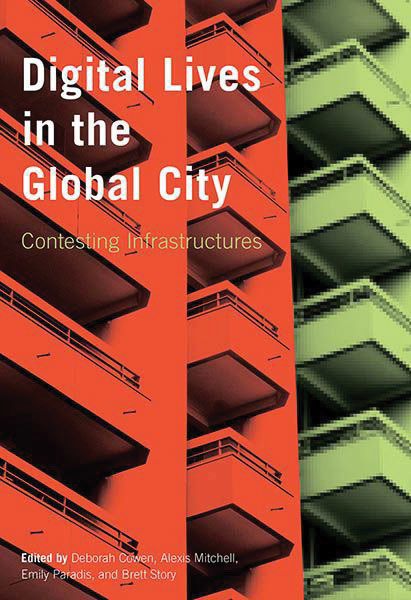
The central focus of Digital Lives in the Global City is the uneven, unequal, and unjust distribution and access to, and application of, digital technologies and infrastructures and how these are experienced in everyday life, especially by marginalized communities that live in high-rise buildings in suburbs. The book has its roots in a seven-year community-engaged research project conducted with the National Film Board of Canada that involved cocreating documentaries and nonfiction storytelling, along with surveys administered by residents, of high-rise apartments on the periphery of Toronto, as well as a Social Sciences and Humanities Research Council project that compared digital citizenship in global suburbs in a number of countries, including Azerbaijan, China, India, Japan, the United States, South Korea, and Singapore. Three principal cities were the sites of in-depth research—Toronto, Mumbai, and Singapore—and these form the core focus of the book. One of the key outputs of this work was an interactive online documentary, Universe Within: Digital Lives in the Global Highrise (2015; see https://www.nfb.ca/interactive/highrise_universe_within_en/), which complements the analysis presented in Digital Lives in the Global City. The book consists of twenty-seven short chapters written by academics, activists, artists, and filmmakers, divided into five sections, one for each of the three cities (Toronto, Mumbai, and Singapore), along with one section focusing on security and surveillance, and one on digitally mediated urban lives.
Undoubtedly, Digital Lives in the Global City is an interesting and thought-provoking read. The mix of grounded case study material relating to individuals and places, along with reflections on specific technologies and issues, illuminates how the digital is central to contemporary urbanization, city governance, and urban experiences. Two aspects make the book stand out. The first is a focus on the lived realities of negotiating digital lives, both in relation to everyday sociospatial relations and inequalities, and with respect to institutional structures and the workings of power and capital. The second is the place-based analysis sited in three global cities, which is sensitive to local politics and how these are scaled within international relations and flows of capital, data, migrants, goods, and services. Together, these aspects provide a nuanced and contextualized set of digital geographies.
Although the book is undoubtedly an insightful and useful read, as with many edited books, the content and focus is a little uneven. The two more general sections in particular seem somewhat out of place. Each includes some interesting essays, but to a large extent they float free of the case studies, discussing different but related issues, and are grounded in different locales. It would have been preferable, in my view, if points of connection and divergence with the three principal cities could have been identified and elaborated, or the book had concentrated on the three case studies, and in particular the digital lives experienced by residents.
In the Toronto case, only the first chapter provides an analysis at the level of individuals and households in the high-rise apartments, accompanied by three contextual chapters relating to finance, welfare, and cost of broadband access at the city level, along with a remix chapter of quotes from academic pieces and activists. Given the wealth of participatory, ethnographic, and survey research material from the source studies, it seems a shame not to have leveraged these further to provide a richer account of the struggles with Internet provision and the digital mediation of everyday life.
The Mumbai and Singapore sections pay more attention to everyday struggles of marginalized communities, although the digital occasionally fades into the background. The Mumbai chapters examine contestation over land and development, with residents struggling with corrupt governance, planning, and development and the circuits of international finance as they try to protect their homes from dispossession and demolition. Mobile phones and social media are key to organizing resistance and mobilizing support. The chapters on Singapore focus on the sociospatial isolation of migrant workers in the construction and home care sectors and the regimes of digital governance and surveillance that shape their lives in discriminatory and exploitative ways. Both sections provide rich, grounded accounts of the ways in which digital inequalities are (re)produced and (re)create divides and uneven development.
Together the three case studies provide a rich empirical insight into how marginalized communities experience and navigate digital infrastructures and processes. There is little direct comparison between them, however, and a useful addition would have been a final chapter that explored the similarities and differences, drew out a set of conclusions concerning digital lives in the global city, charted what questions and future research the essays prompt, and reflected on the epistemological and methodological approach adopted and how best to make sense of digital life.
Despite these quibbles, Digital Lives in the Global City is a useful addition to the digital geographies literature. Its focus on the lived realities of digital lives, digital inequalities and data/algorithmic power, and variances in digital citizenship provides a nice counterpoint to much contemporary literature concerning the promises of smart cities. This book illustrates why contesting infrastructure continues to be vital work.
